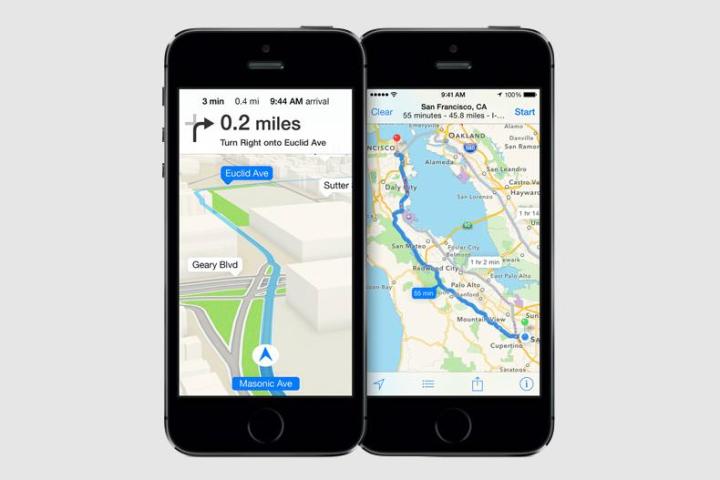
We don’t tend to hear much about Apple Maps these days, either because it’s improved over time or because no one ever went back to it following its disastrous launch back in September 2012.
Either way, there’s a suggestion that a greatly improved version of the much-maligned software is set to land for iDevice owners with the release of iOS 8.
While the tech company has been rolling out occasional interface changes and updates to its map data over the last 18 months, 9to5Mac suggested in a report Tuesday that Apple’s hiring of mapping specialists last year, as well as the acquisition of a number of navigation-based startups, will result in far meatier under-the-hood improvements in the next version of the tech firm’s mobile operating system, which could arrive as early as this summer.
An unnamed source familiar with the ongoing work told 9to5Mac that users could expect to see greatly enhanced data, clearer labeling and range of new features with the next version of Apple Maps.
It’s also said to be working on adding public transit directions for major US cities, finally making some good use of the expertise that came with the buyout of startups such as Embark and HopStop. Public transit functionality for cities outside the US is expected to follow.
9to5Mac goes into great detail on the expected Maps revamp, which looks set to include transit directions embedded in the maps themselves, a clearer way to view stations and stops, a split-screen view showing a range of travel information, and the ability to have transport information sent to your iOS device at a particular date and time.
Indoor mapping views, enhanced car integration, and augmented reality functionality “that leverages the iPhone’s compass hardware to visually see nearby points of interest” are also reported to be in the works.
The changes and features – providing they’re fully tested and fully functional when they’re rolled out later this year – look set to take Apple Maps to another level, though the Cupertino company may choose to give it a helping hand with a well coordinated marketing campaign in an effort to grab the attention of iPhone users perfectly happy with Google’s alternative offering.


